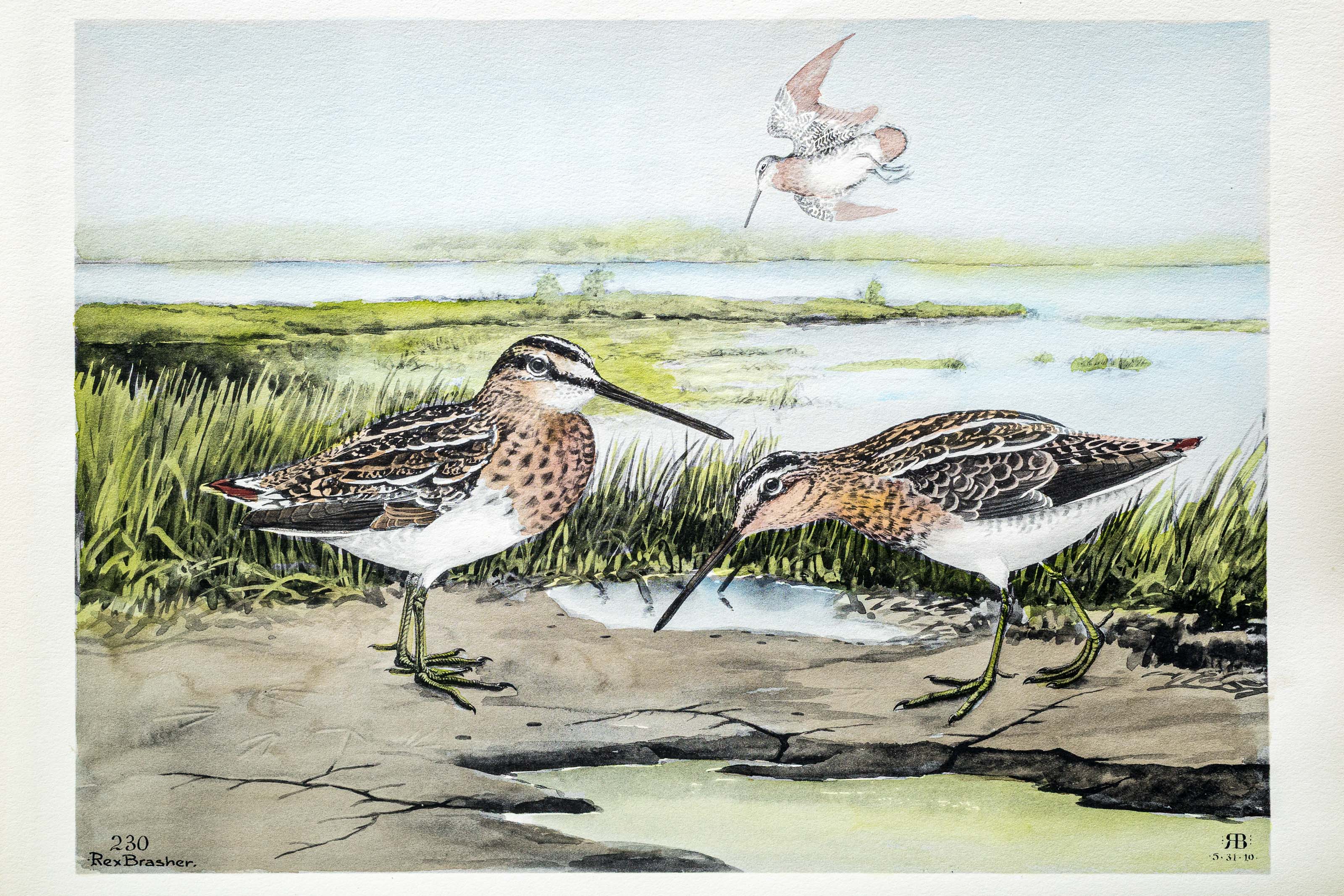

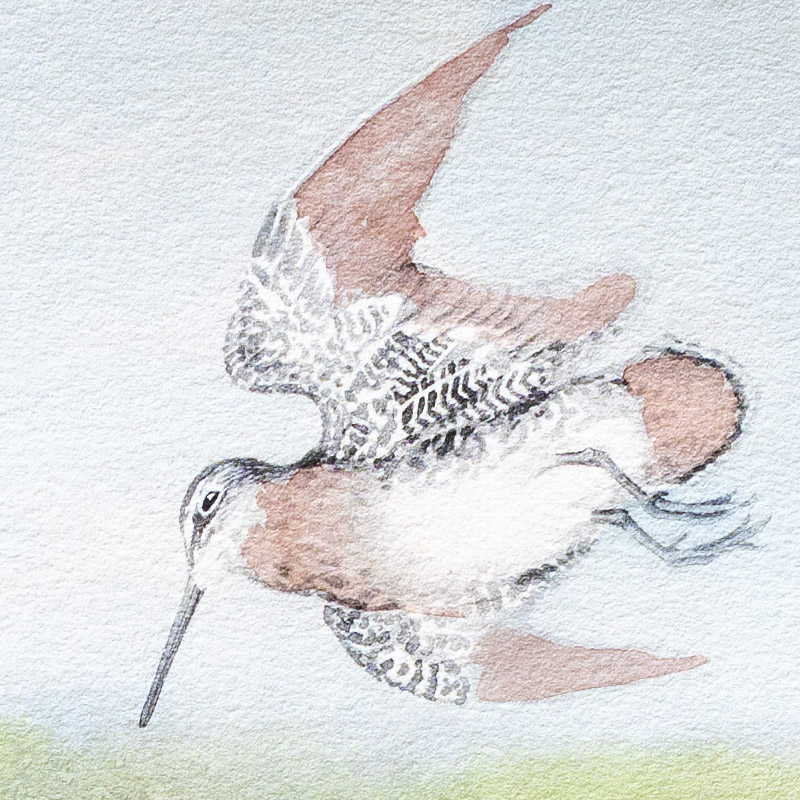
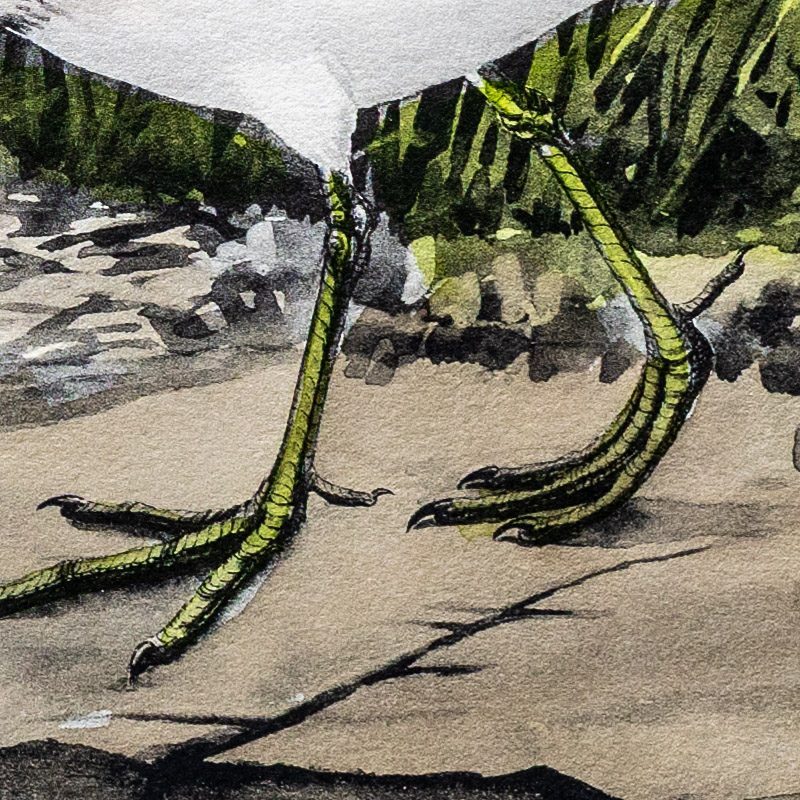
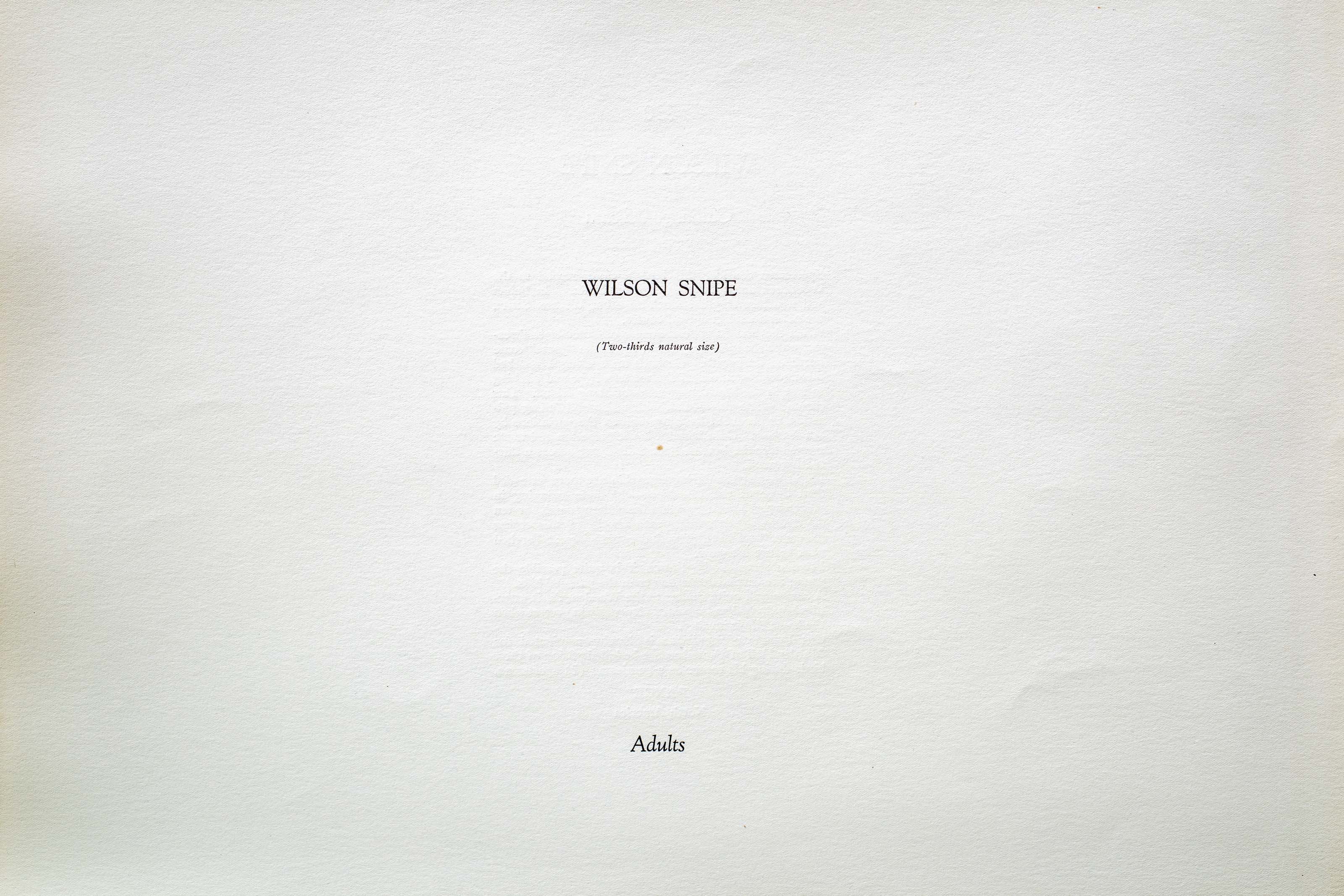
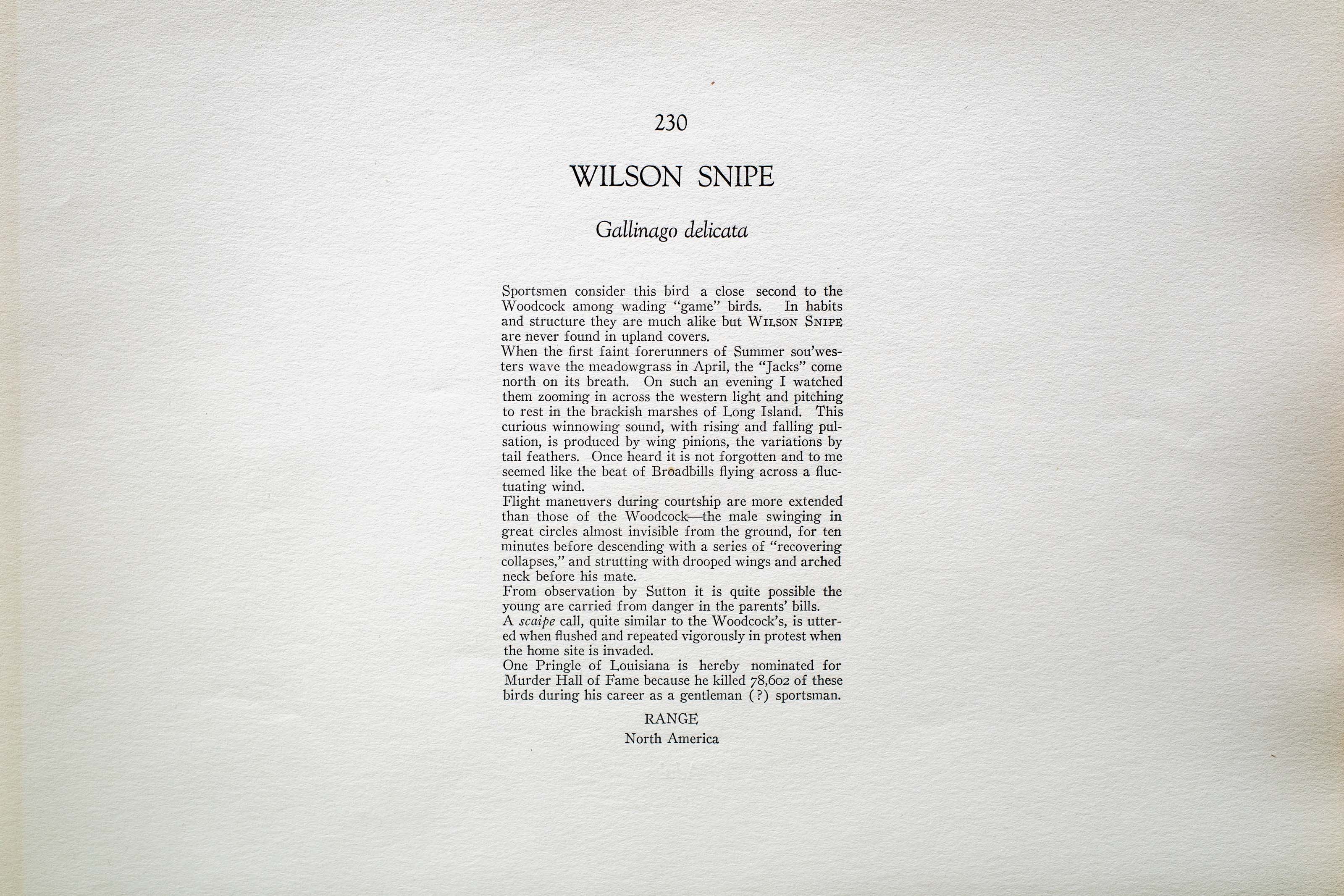

1910
1930
4
230
A team of dedicated board members, volunteers, and student interns has published every page in Volume 9. This volume includes 360 images of paintings and lyrical descriptions of birds, now available online for everyone to enjoy anywhere in the world. This is a monumental task. Each volume requires approximately 400 hours to photograph, edit, transcribe, catalog, and publish online. We need your support to complete this work.
If you're tech-savvy, have a good eye, are meticulous with details, and love structured data, please consider volunteering by emailing us at hello@rexbrasher.org.
We encourage all bird lovers and supporters to consider a monetary donation to support our mission to make Rex's work available for everyone. You can provide a one-time or recurring donation online.
Sportsmen consider this bird a close second to the Woodcock among wading "game" birds. In habits and structure they are much alike but WILSON SNIPE are never found in upland covers.
When the first faint forerunners of Summer sou'westers wave the meadowgrass in April, the "Jacks" come north on its breath. On such an evening I watched them zooming in across the western light and pitching to rest in the brackish marshes of Long Island. This curious winnowing sound, with rising and falling pulsation, is produced by wing pinions, the variations by tail feathers. Once heard it is not forgotten and to me seemed like the beat of Broadbills flying across a fluctuating wind.
Flight maneuvers during courtship are more extended than those of the Woodcock — the male swinging in great circles almost invisible from the ground, for ten minutes before descending with a series of "recovering collapses," and strutting with drooped wings and arched neck before his mate.
From observation by Sutton it is quite possible the young are carried from danger in the parents' bills.
A scaipe call, quite similar to the Woodcock's, is uttered when flushed and repeated vigorously in protest when the home site is invaded.
One Pringle of Louisiana is hereby nominated for Murder Hall of Fame because he killed 78,602 of these birds during his career as a gentleman (?) sportsman.
North America.